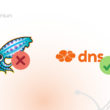In the current scenario, it is important to raise awareness in digital security for companies in all sizes and segments . In an increasingly connected world, companies face increasing risks of cyber attacks that can compromise their sensitive data, operations and even their corporate reputation .
Reports indicate that in Brazil, the number of cyber attacks has increased exponentially in recent years , with an increase of 70% only in the third quarter of 2024 (data from Iron soil , vertical cybersecurity networking). Estimates show that in a global context, financial losses caused by cyber crimes should exceed $ 10 trillion by 2025.
Given this challenging scenario, awareness emerges as a key piece for the protection of companies against digital threats . For this, training and sensitization initiatives help to significantly reduce these risks by turning their employees into allies in defense of the organization.
The evolution of digital threats in the corporate environment
The trajectory of digital threats is directly related to technological evolution . To understand this context, it is necessary to observe how the attacks have evolved over time. In the 1990s and 2000s, attacks were usually focused on systems and infrastructure, using viruses that infected devices indiscriminately. However, with the advance of connectivity, the scenario began to change. These attacks become more sophisticated , aiming at not only systems but also corporate networks.
In recent years, the approaches of cybercriminals have changed dramatically . Today, people are the main targets, suffering increasingly personalized attacks. Strategies such as phishing and social engineering exploit human vulnerabilities , such as lack of attention or knowledge about best security practices.
This change has occurred mainly because, while systems can be protected with advanced technology, people remain the weaker link in the security chain. Given this, a critical question arises: how to protect employees? This highlights the urgent need to educate and make employees aware of the risks present in the digital environment within companies. After all, understanding this evolution is indispensable for the planning of more effective defense actions.
In this sense, it is important to highlight the benefits of awareness initiatives. Organizations that invest in awareness can not only mitigate risks but also create a security culture that permeates all organizational levels.
Main types of highlighted cyber attacks
attacks are diverse and vary in complexity and impact caused. For example, among the most common approaches is phishing , a strategy that uses emails or fraudulent messages to deceive victims and gain access to sensitive data. According to studies by Security Leaders , 90% of successful cyber attacks start in a phishing email.
In addition, ransomware is another rising attack , in which cybercriminals kidnap business data and require the payment of financial redemption for release. Consequently, this approach can paralyze operations and cause millionaire losses, and, as expected, compromise customer confidence and the company's image in the market.
Thus, the diversity of methods used by cybercriminals highlights the need for a multifaceted and robust approach for protection. In this context, investing in training and awareness is one of the smartest ways to minimize the effectiveness of these approaches, ensuring resilience of the company.
Phishing
Phishing stands out as one of the most common attack tactics, mainly due to its simplicity and high success rate. In this context, cybercriminals send fraudulent messages that simulate legitimate communications of reliable companies such as banks or suppliers, with the aim of deceiving their recipients.
For example , according to Web 3 Scan Sniffer , about 10,800 victims were affected by phishing attacks in September alone. In addition, a phishing attack using a permission subscription managed to divert $ 12,083 tokens Spark Wrapped Ethereum worth $ 34.43 million.
Given these numbers, we can see how the financial impact of Phishing is alarming. To further illustrate the severity of the situation, according to the IBM Cost of A Breach Data Breach , Brazilian companies spend an average of 6.75 million reais on data violation. However, in the case of phishing attacks, the average cost reaches 7.75 million reais per offense.
Social Engineering: How Hackers Explore Human and Psychological Vulnerabilities
engineering is an attack strategy that explores human behavior to obtain unauthorized data or access to the system. Instead of directly attacking technological resources, cybercriminals take advantage of failures such as trust, fear or urgency to manipulate their victims.
For example, a very common approach involves messages or telephone calls that undergo technical support or representatives of reliable institutions. In these situations, urgent scenarios are developed so that the victim is pressured to act without thinking, such as providing passwords or transferring values.
This tactic is extremely effective because it uses human psychology itself as a tool. In addition, through the union of a social engineering and phishing strategy, cybercriminals were able to invade the Integrated Financial Administration System (Siafi) , causing loss of 15 million reais by 2024 .
Given this threat, to combat social engineering, it is necessary to create an organizational culture that promotes a process of healthy distrust and continuous questioning of unexpected requests. In this sense, employee training to identify manipulation signs and report incidents can help significantly reduce the risks of this approach.
Ransomware: the growing threat and direct impacts on the operation of companies
Ransomware an approach that has been gaining prominence in the midst of digital threats. According to a study by Cyber Intelligence , the ransomware continues among the greatest threats in current cybersecurity. This is because it combines financial extortion with operational interruption , cybercriminals kidnap information and corporate systems, requiring payment to release access.
In addition, the financial impact caused by these attacks has reached record levels. For example, according to a report developed by Cyber Security Ventures , the ransomware will cost its victims about $ 265 billion annually by 2031 , considering the current cost of $ 42 billion . These numbers make clear the need to combat this threat more effectively.
In this context, combating these risks is done through a proactive approach . Among the most effective measures are frequent backups and regular system updates. Additionally, the use of advanced detection tools and the awareness of employees are fundamental to avoid initial infections.
The role of human errors in security incidents
Studies show that the lack of knowledge of employees is a major causes of security breaches. For example a recent report from the World Economic Forum has revealed that 95% of cyber security problems are caused by human error .
In this sense, the lack of knowledge about digital security is one of the main factors that contribute to these errors. This is because employees who do not understand the severity of threats and the impact they can have on the company become more likely to fall into blows and adopt risk behaviors.
Given this scenario, the fight against these vulnerabilities is done through investment in continuing education and training of employees to recognize and avoid the most common traps. In addition, process implementation such as multifactorial authentication can make a lot of difference.
Alarming statistics that reinforce the need for awareness
Statistics related to cyber incidents are worrying and demonstrate the urgency in awareness of employees. For example, the second edition of the Digital Security Barometer , a Mastercard survey and Datafolha Institute , revealed that 64% of companies in Brazil are targets of digital fraud and attacks with medium or high frequency.
On the other hand, organizations that prioritize their employees' education record up to 70% reduction in phishing and malware approaches. This data shows how awareness can be a powerful tool in preventing attacks.
In addition, the cost of recovery after an incident is also high. To further aggravate the situation, the average time to recover data after a violation usually exceeds what insurance policies cover, generating additional losses for companies . Therefore, these data reinforce the need to implement preventive actions such as employee training and robust policies.
Benefits of awareness training
Employee training offers broad benefits to companies. First, in addition to reducing the number of cyber incidents, these approaches promote a security culture and strengthen organizational defenses. Thus, by training employees, the company transforms what was once a vulnerability into a strategic line of defense.
Additionally, the more trained employees are, the easier it will be to identify signs of threat, such as fraudulent emails. Another important point is that strengthening the confidence between teams and stakeholders is another significant benefit, also improving the organization's reputation on the market.
Finally, the adoption of regular training programs not only protects the company's internal systems, but also prevents fines and recovery costs associated with incidents.
Strengthening of Organizational Security
Digital security awareness transforms employees into strategic allies of the company. For example, when well trained, they recognize threats more easily, considerably reducing the risks of incidents.
According to recent data, a 2023 report from Cofense pointed out that companies that implement awareness programs reduce the attack surface by up to 40%. This data demonstrates how training initiatives can bring significant results.
In addition, awareness provides a more resilient work environment. With simple practices, such as using strong passwords and link checks reduce the chances of safety breaches.
Finally, the integration of digital security in organizational culture allows you to align daily practices with long -term strategies, ensuring more protection and sustainability for operations.
Increased productivity and confidence between teams
Digital security awareness also has direct impacts on productivity . For example, and MPRinations suffering fewer interruptions caused by cyber incidents can keep their operations more efficient and stable.
In addition, well -trained employees deal better with risky situations, avoiding panic or errors at critical times. This preparation is essential because acquired confidence is reflected in the agility of making safe decisions and reducing the rework caused by these incidents.
As a result, teams prepared to face threats collaborate more integrated, creating an organizational environment with more harmony and cooperation. Thus, digital security is no longer an exclusive IT industry concern and becomes a collective effort.
Alignment with data protection regulations
We know that the General Data Protection Law (LGPD) has recently been published, which brought rules for companies to be able to protect their information more efficiently. In this context, digital awareness and security are essential pillars for compliance with regulations, such as LGPD and GDPR (General Data Protection Regulation).
In addition, these regulations require companies to adopt safe practices in the treatment of personal information, ensuring that employees are trained to avoid leaks. Otherwise, the lack of compliance with these laws may result in significant fines and reputational damage to the company.
Therefore, the implementation of regular training helps to ensure that employees understand the legal guidelines and know how to apply them to their routines. For example, sensitive data protection practices and appropriate responses in cases of incidents are approaches that help companies remain protected.
How to structure an effective awareness program
Structuring an effective awareness program is a strategy that requires careful planning and execution. First, it is necessary to define clear objectives, such as reducing the number of incidents or increasing the cyber threat recognition rate.
Stages for the development of a robust training program
Developing a robust awareness program requires planning and alignment with the organization's needs. The definition of clear objectives is the first step, so that the company must determine measurable goals for an appropriate strategy.
The program should include a detailed schedule with regular training, frequent updates and open channels for questions and feedback. This continuity in the process ensures that employees are always prepared to face new threats.
Initial evaluation: Understanding the weaknesses
The initial diagnosis is a critical component of this process. In this sense, analysis of analysis helps to identify weaknesses of the organization and allow the development of directed and relevant content.
In addition, each company has specific needs, which makes it essential to perform detailed diagnostics and analyzes of internal vulnerabilities. Only then is it possible to develop a personalized training program, capable of fully meeting the demands of the business.
To achieve this goal, a mapping of target audiences , considering that different areas of the company have specific needs and vulnerabilities. For example, the sales team, for example, may need guidance on customer data protection, while the financial sector should focus on avoiding social engineering scams.
Moreover, it is also necessary to implement tools aimed at measuring the current level of employee awareness. This way, the company will be able to customize its training program, correcting knowledge failures and eliminating vulnerabilities presented by employees.
Objectives Definition: Identify clear goals for the program
The starting point for a successful awareness program is the definition of clear and measurable goals . In this sense, the company should identify which goals want to achieve, such as increased knowledge of safety, reduction of internal incidents or greater adherence to organizational policies. These goals, therefore, function as a guide to planning and help measure program effectiveness over time.
In addition, it is essential to align these goals with the organization's needs and priorities. For example, a financial company can prioritize sensitive data protection , while a manufacturing organization may focus on avoiding violations that undermine operational flow. Thus, by setting these goals in a specific and strategic way, the awareness program becomes an indispensable tool for risk mitigation .
Mapping of target audiences: Customize content for different areas of the company
Each department of a company faces specific challenges and risks, which, therefore, makes the mapping of target audiences . This process, in turn, consists in identifying the most vulnerable areas or that demand greater attention, such as IT, financial and human resources. From this analysis, the content of the program can be personalized to address real situations faced by each team, increasing the relevance and effectiveness of training .
For example, training for the IT team can address topics such as protection against cyber attacks and safe data management practices. For the administrative sector, the focus may be in identifying phishing attacks and secure use of devices. Thus, this personalization not only raises engagement, but also ensures that all employees receive information directly applicable to their work routines .
Construction of dynamic and engagement content
The creation of dynamic materials that engage employees is one of the pillars of an effective awareness program. In fact, and often fail to capture attention and promote behavioral changes , which makes it necessary to use more dynamic tools that help employees understand what is being passed without, however, making the approach tiring.
One of the most effective strategies for circumventing this challenge is investing in various formats , such as simulations of attacks, explanatory videos and interactive workshops. These approaches, in turn, make learning more memorable and practical , facilitating everyday application.
In addition, it is necessary to adapt the materials to different levels of technical understanding. Thus, employees with less familiarity with technological resources can also benefit from simplified materials, while IT teams can explore the most complex aspects. Finally, it is important to include real examples to show the relevance of digital security, helping to connect training to reality and increase participants' adhesion .
Continuous training and regular updates
Digital threats evolve along with technology, which makes training obsolete very quickly. Performing a single training program is not sufficient to ensure long -term protection within the company, and it is necessary to update the content regularly , incorporating new trends and technologies.
Continuous training also allows the company to incorporate employees feedback by adjusting materials as needs arise. This program approach ensures greater engagement .
In addition, continuity reinforces learning and helps transform good safety practices into a habit. Periodic simulations allow you to evaluate the efficacy of the program and identify opportunities for improvement. By authorizing the constant update, companies ensure that their employees are always prepared to face the challenges, strengthening the resilience of the organization .
Results measurement and strategic adjustments
Measuring the results of an awareness program is critical to assessing its impact and its results . Performance indicators, such as incidence reduction and threat identification, are aspects that help measure the outcome of initiatives and implement improvements.
Simulations responses , periodic incident reports, and training adherence provide valuable data to implement adjustments and strategies. For example, if many employees still make mistakes in phishing simulations, content can be renewed and revised to more deeply address this weakness.
It is important to consider the financial impact of the training program, comparing the cost of implementing with spending avoided due to the reduction of successful attacks. Thus, the company can demonstrate the return on investment of the initiatives implemented and ensure the participation of employees.
This evaluation process should happen continuously, as threats change, as well as organizational needs. Keeping the program up to date is critical to ensuring its effectiveness and relevance in the long run.
Leadership as a pillar for a security culture
Leadership plays the central role in promoting a digital security culture . The clear and frequent communication of managers about the importance of security allows employees to feel more engaged and motivated to implement good practices.
An example of this is the active participation of leaders in training programs . In addition to demonstrating a commitment of high management with the theme, this participation encourages employees of all hierarchical levels.
To complement this approach, managers can promote initiatives that reinforce shared responsibility . The denunciation of suspicious behaviors and the implementation of policies that encourage communication contribute to the creation of a safer environment.
Digital security should be positioned as an organizational priority, so that leadership reduces risks but also strengthens internal and external trust . With this, security becomes a competitive differential.
Examples of actions led by managers
The role of all is fundamental within the company's security culture. When leaders actively promote good security practices, they convey more confidence and encourage employees to prioritize data protection.
Clear and frequent communication on the importance of digital security is one of the most effective actions. This communication can be carried out through meetings, informative panels and corporate emails , reinforcing good practices and alerting new threats. Keeping direct contact helps keep the theme in evidence and demonstrates commitment from all members of the company.
Engaged leaders can also set security goals and indicators for their teams. The integration of digital security with the company's objectives demonstrates the alignment between its strategy and everyday practices, consolidating a culture of continuous and effective protection.
Fostering shared responsibility
Digital security is a collective responsibility , and it is necessary to engage all the company's employees to deliver this process. When each individual understands their role in protecting data and systems, the company becomes stronger and more resilient in the face of threats.
To reinforce this idea, it is necessary to highlight the teams that security is everyone's responsibility. From sending a simple email to the use of company devices, each action can contribute to protecting or exposing the company to threats. Awareness programs should address this theme continuously, promoting collaboration and eliminating the view that security is an exclusive aspect of the IT department.
The implementation of clear policies for the denunciation of suspicious behaviors is also essential. For this, it is necessary to create a confidential communication channel that allows employees to report incidents, such as unauthorized accesses and fraudulent emails. This encourages employees to act proactively by identifying problems, avoiding the damage caused by cyber threats.
It is important to highlight to all members of the company that these complaints do not result in reprisals . For this, it is necessary to implement and strengthen policies that protect complaints and promote internal trust , ensuring that employees feel comfortable to contribute to the safety of the organization.
Promotion of regular campaigns that emphasize shared responsibility is critical to strengthening a sense of belonging . A culture where each employee understands that their contribution is vital can bring numerous benefits to organizations.
Common barriers in the implementation of the awareness program
Implementation of Digital Awareness and Safety Programs is a process that can face some challenges. These barriers can make employees' adherence and the effectiveness of initiatives difficult, and it is important to identify them to develop strategies that help overcome them.
Employee resistance is one of the main difficulties. training programs as additional tasks and not as essential, which can lead to demotivation and low participation rate. Lack of integration with the work routine is another obstacle to consider. Extensive and inexpensive training can interrupt the workflow and cause losses in productivity.
Without strategic planning and appropriate resources , initiatives can become superficial and ineffective, avoiding the implementation of a security culture and causing damage to the company.
Strategies to overcome challenges
In order to overcome these barriers, it is important to adopt practical and personalized approaches , considering the profile of employees and the needs of the company. The integration of training with the daily work flow is critical, allowing the employee to complete the modules in a few minutes.
communication of the benefits of training is also extremely important. It is necessary to show how learned practices protect not only the company, such as employee's personal information , helping to maintain engagement.
Gamification is a strategy that has been bringing many benefits to the implementation of such training in the corporate environment . The use of quizzes, rewards and ranks makes learning engaging and increases participants' engagement. It is important for managers to show commitment and also participate in the initiatives to motivate their team to follow the example.
Strategic partnerships with training suppliers
Working with suppliers specializing in developing awareness and digital security training can optimize the implementation of your program. These partners already have the experience and resources needed to develop personalized solutions aligned with the needs of each company.
The biggest benefit of this partnership is the customization of content , which allows you to address unique challenges for each organization, including examples of the acting industry and realistic simulations that reflect the most relevant threats.
Specialized suppliers also use advanced technologies such as interactive platforms and artificial intelligence . This approach can offer more dynamic and effective learning experiences, increasing engagement and results.
Another great benefit of investing in external partnerships is that they release their team to act more directly on what is really important to the business. Thus, when experts ensure that training is conducted effectively, your company will not be detrimental to productivity .
Awareness as a competitive differential
Faced with a scenario where digital security is increasingly critical, companies that prioritize awareness end up excelling in the market. Adopting a proactive approach allows security to be strengthened and the company's reputation to be improved in the market.
Positioning digital security as a priority within your organization is an approach that demonstrates responsibility and commitment. In addition to improving the image of the organization in the face of customers, partners and employees, this generates confidence and strengthens long -term relationships.
In short, companies that invest in awareness often become references in their sectors. Customers and stakeholders recognize the value of organizations that deal with serious digital security. By turning awareness into a competitive differential, companies strengthen their defenses, increase market trust and consolidate their position as leaders in digital security .
Awareness as shared responsibility
It is important to understand that digital security is not just a technological issue , it is a shared responsibility that begins with everyone's awareness. In an environment where threats are increasingly sophisticated, investing in training programs is critical to protecting the company and its sensitive data.
Continuous awareness transforms its employees into strategic allies , reducing risks and improving the reputation of the organization. In addition, this process promotes intangible benefits, such as increased internal and external trust and improves the company's positioning.
resilient and innovative work environment . Implement an awareness program in your organization and protect the future of your business .











